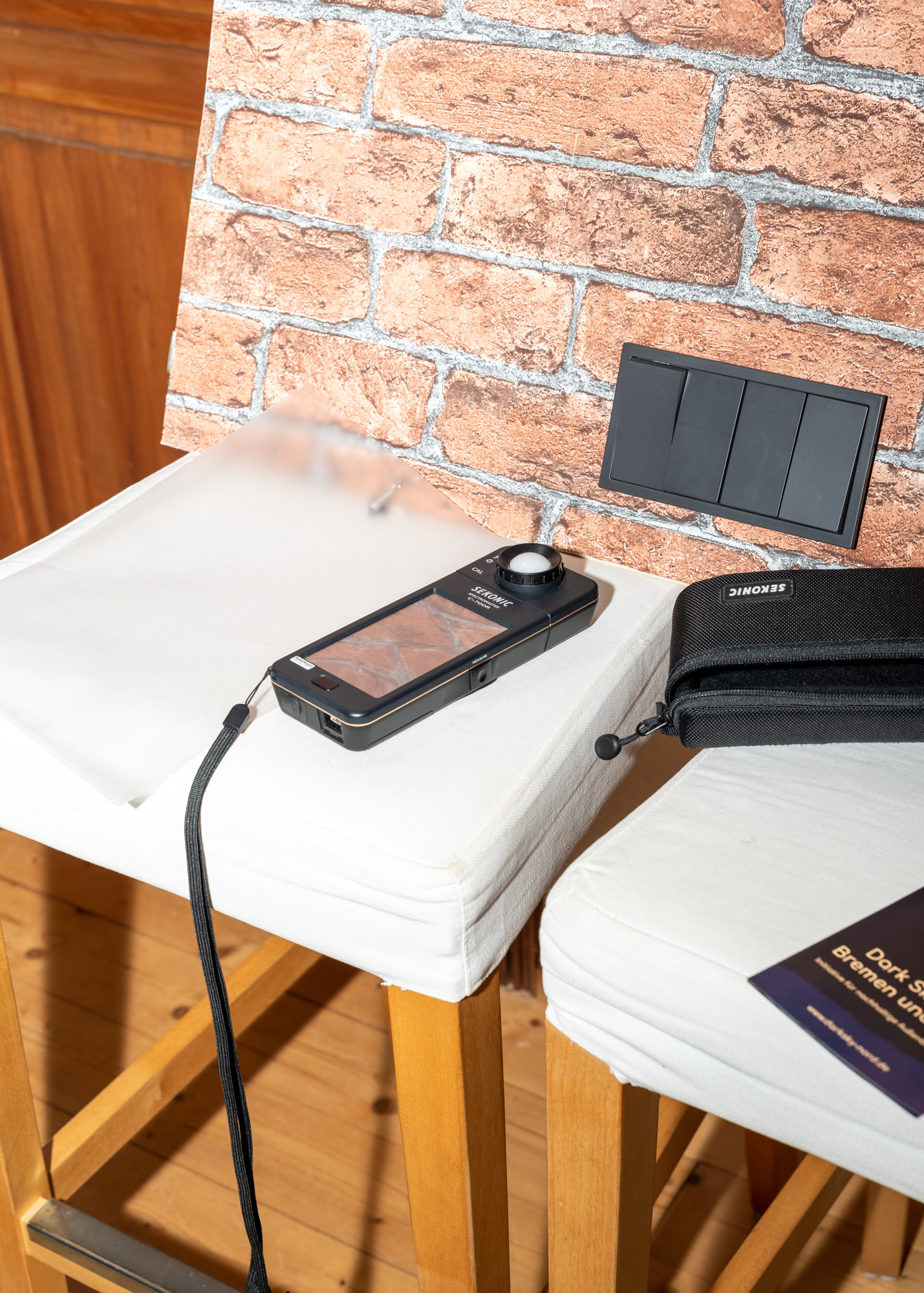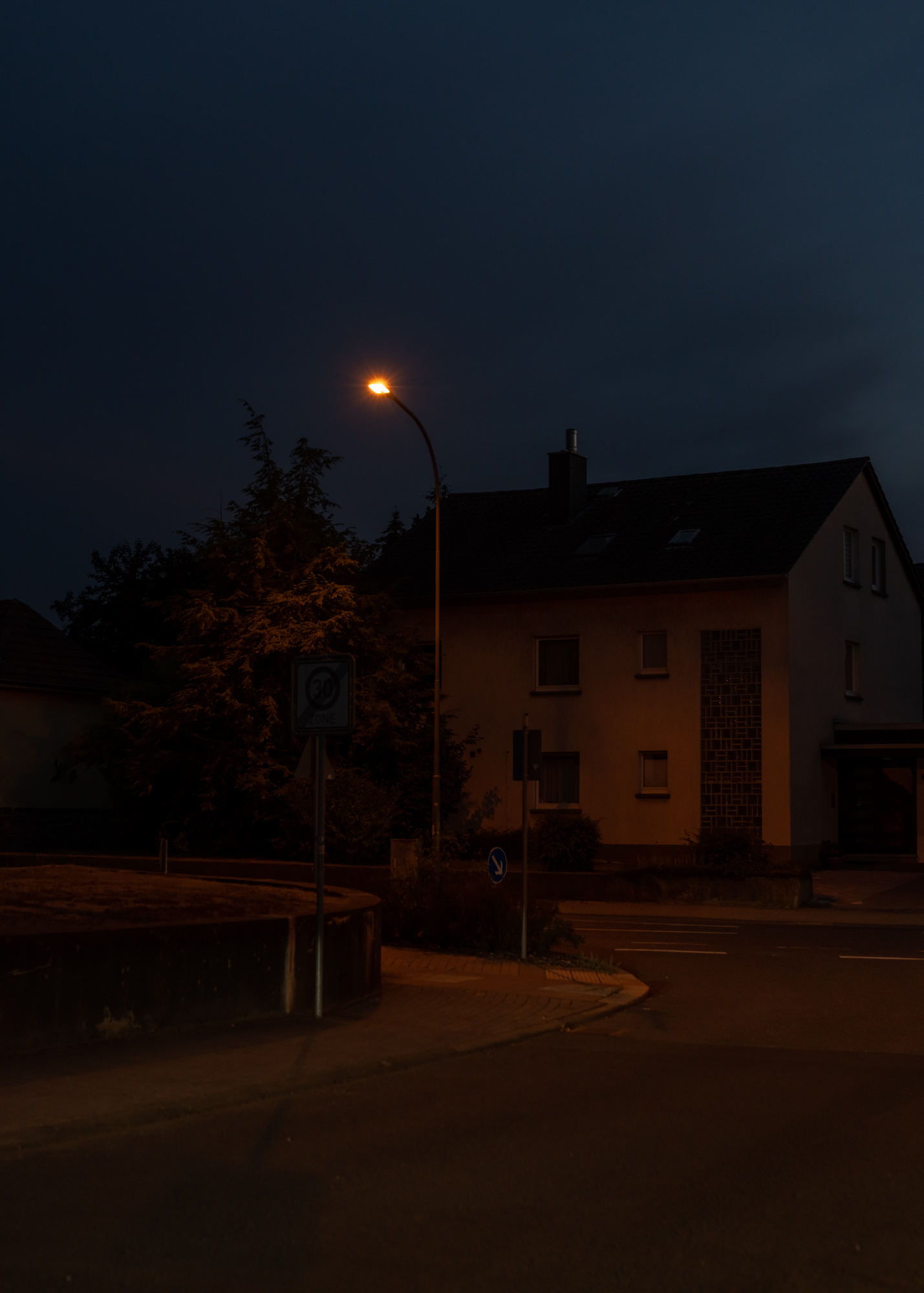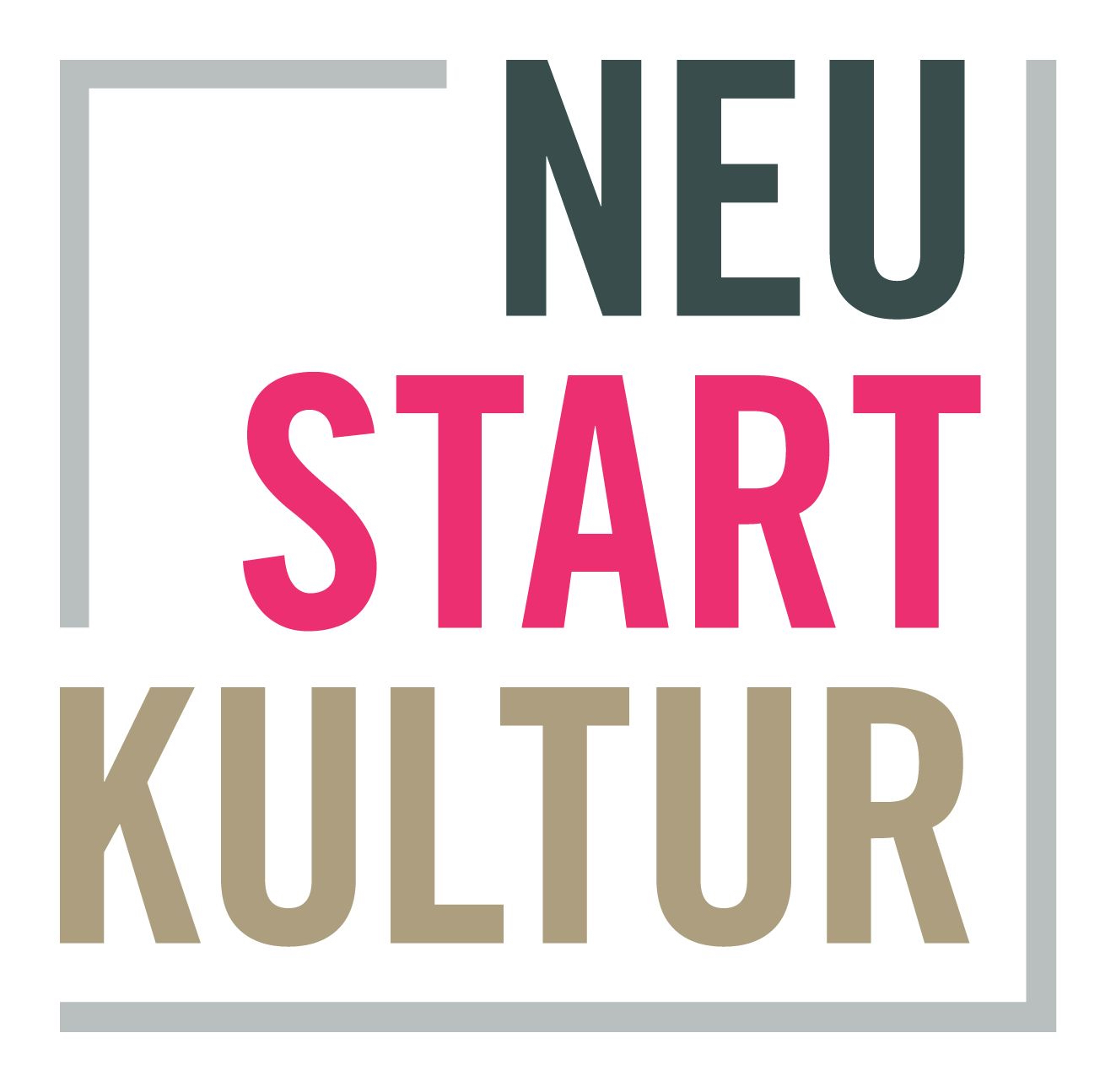Dark Sky City
Research Project
- 2022
Dark Sky City was a research project started in 2022 for which I gratefully received financial support from Neustart Kultur and Stiftung Kunstfonds. My intention was to gain more insight into the motives and actions of people who are in some way connected with light pollution in Germany – those who educate their communities on issues surrounding this topic, who develop new technologies to reduce our dependency upon artificial light at night, and who campaign within local municipalities for much-needed changes to urban lighting policies that might reduce the impact of the brightening of the night sky on human health, on wildlife, and upon our shared environments. At the heart of this project was my drive to bring awareness and understanding of light pollution to a wider context - for it to not only be understood within spaces of climate change, environmental protection, energy sustainability, architectural design and urban planning, but also within spaces of art practice, education, culture, and public discourse.

Throughout the course of my project, I connected with and/or interviewed fascinating people in the fields of architectural lighting, urban planning, light pollution, scientific research, wildlife protection, astronomy, and even aerospace engineering. These include Annette Krop-Benesch (Verlust der Nacht), Etta Dannemann (Visit Dark Skies), Morgan Pattisson (US National Parks Consultant), Karin Dörpmund (Dark Sky Nord), Thomas Schielke (ERCO), Bertold Kujath (Gaslicht-Kultur e.V), Nona Schülte-Römer (Humboldt-Universität zu Berlin), Christopher Kyber (Ruhr-Universität Bochum), René Curwy (Patten der Nacht), and Caius Reza & Noel Png (Alba Orbital).
At the beginning of my project, I had understood the issue of light pollution predominantly from the perspective of hobby astronomers who wished to better observe the stars at night, but the more people I connected with, the more I began to see the many overlapping contexts at play between safety within the city, for example, and light as a political tool (as in the case of Germany’s decision to reduce city lighting emissions in response to the current energy crisis and the war in Ukraine). Despite the German government’s decision to ‘switch off’ the lights illuminating public monuments in Berlin, I observed little change or indeed lasting impact.
An important question arose for me: Is artificial light in the city so ubiquitous that we have become blind to it? If that is the case, how can we make light visible once more?

Darkness is something we fear because it is an imprint of our ancestral past. We have evolved to be active during the day and to rest during the night. But technology is allowing us to push the margins of day and night to extremes that are already testing the structural limits of our natural and built environments. In the incandescent buzz of nearly perpetual light, we are capable of blocking the curtain of night. As a result, the majority of humans are increasingly unlikely to experience the phenomenon of a truly dark sky. And it’s not just those who live in the city who are no longer granted this access. Sky glow (caused by concentrated and excessive light pollution) is the dome-like gradient of light you see radiating from built-up urban, residential or industrial areas. This affects not only those places but also the suburbs and countryside around them for many miles. As a result of sky glow, astronomical observatories positioned strategically in order to spot asteroids that threaten to collide with our planet have increasingly limited visibility. It’s also estimated that around a third of the world’s population can no longer see the Milky Way when looking up at the night sky.
Aren’t we losing something here?
We are becoming disconnected from something primal and essential, and the source of humanity’s most important art, music, and science for thousands of years - a view of the stars. Yet, if we were to go back only 150 years, every human on earth was capable of looking up at night and seeing thousands of stars. This was possible in even the most densely-populated and gas-lit cities of the world before the turn of the century and the industrialisation of light.

Neustart Kultur + Stiftung Kunstfonds


With special thanks to:
Rob Atkinson
Nikolai Alber
Izzy Dempsey
Lukas Klee
Anette Krop-Benesch
Thomas Schielke
Karin Dörpmund
Etta Dannemann
Caius Reza & Noel Png